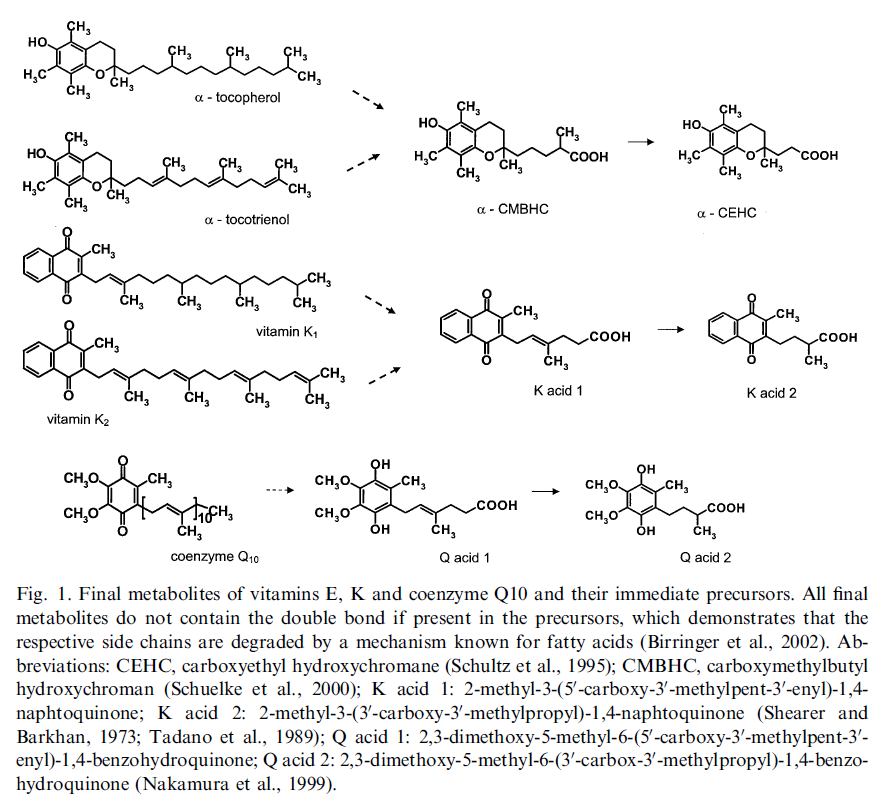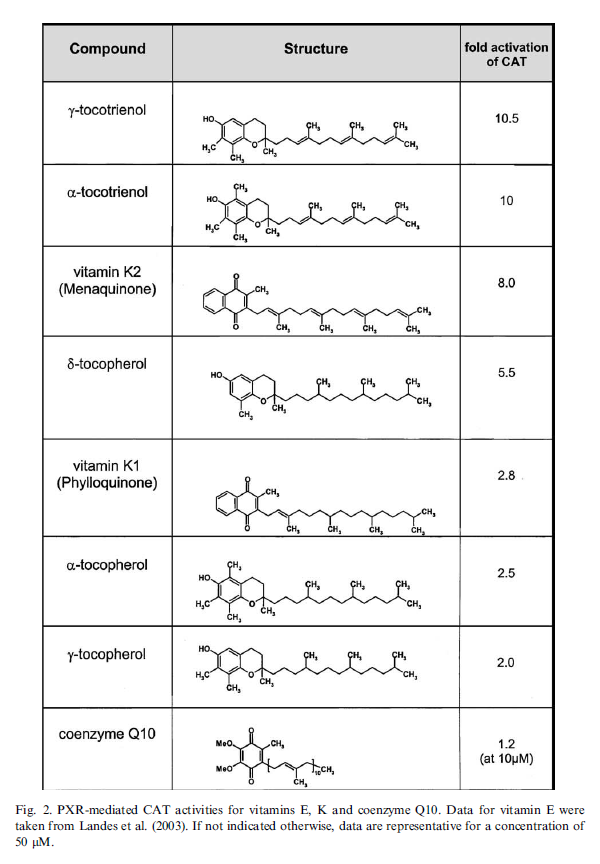Pregnane X receptor and the fat-soluble vitamins
-
Homologous metabolic and gene activating routes for vitamins E and K
"Vitamins E and K share structurally related side chains and are degraded to similar final products. For vitamin E the mechanism has been elucidated as initial w-hydroxylation and subsequent b-oxidation. For vitamin K the same mechanism can be suggested analogously. w-Hydroxylation of vitamin E is catalyzed by cytochrome P450 enzymes, which often are induced by their substrates themselves via the activation of the nuclear receptor PXR. Vitamin E is able to induce CYP3A-forms and to activate a PXR-driven reporter gene. It is shown here that K-type vitamins are also able to activate PXR. A ranking showed that compounds with an unsaturated side chain were most effective, as are tocotrienols and menaquinone-4 (vitamin K2), which activated the reporter gene 8–10-fold. Vitamers with a saturated side chain, like tocopherols and phylloquinone were less active (2–5-fold activation). From the fact that CYPs commonly responsible for the elimination of xenobiotics are involved in the metabolism of fat-soluble vitamins and the ability of the vitamins to activate PXR it can be concluded that supranutritional amounts of these vitamins might be considered as foreign."


↳ Vitamin E activates gene expression via the pregnane X receptor
-
Thanks for sharing.
Activation of the PXR/SXR is an interesting thing in and of itself. It increases phase 1,2 and 3 detoxification in the liver and increases CYP3A4. Other ligands are for example: progesterone, 5aDHP or bile acids.
The authors of this study hypothesize that the liver-regenerating capabilites of Vitamin K2 were reliant on PXR-activation.
All the nucelar "X" receptors are really interesting, the FXR probably beeing my favorite.
PXR/SXR also upregulates a protein that takes up and excretes prostaglandins. So vitamin K leads to less PUFA/prostaglandin metabolites and damage.